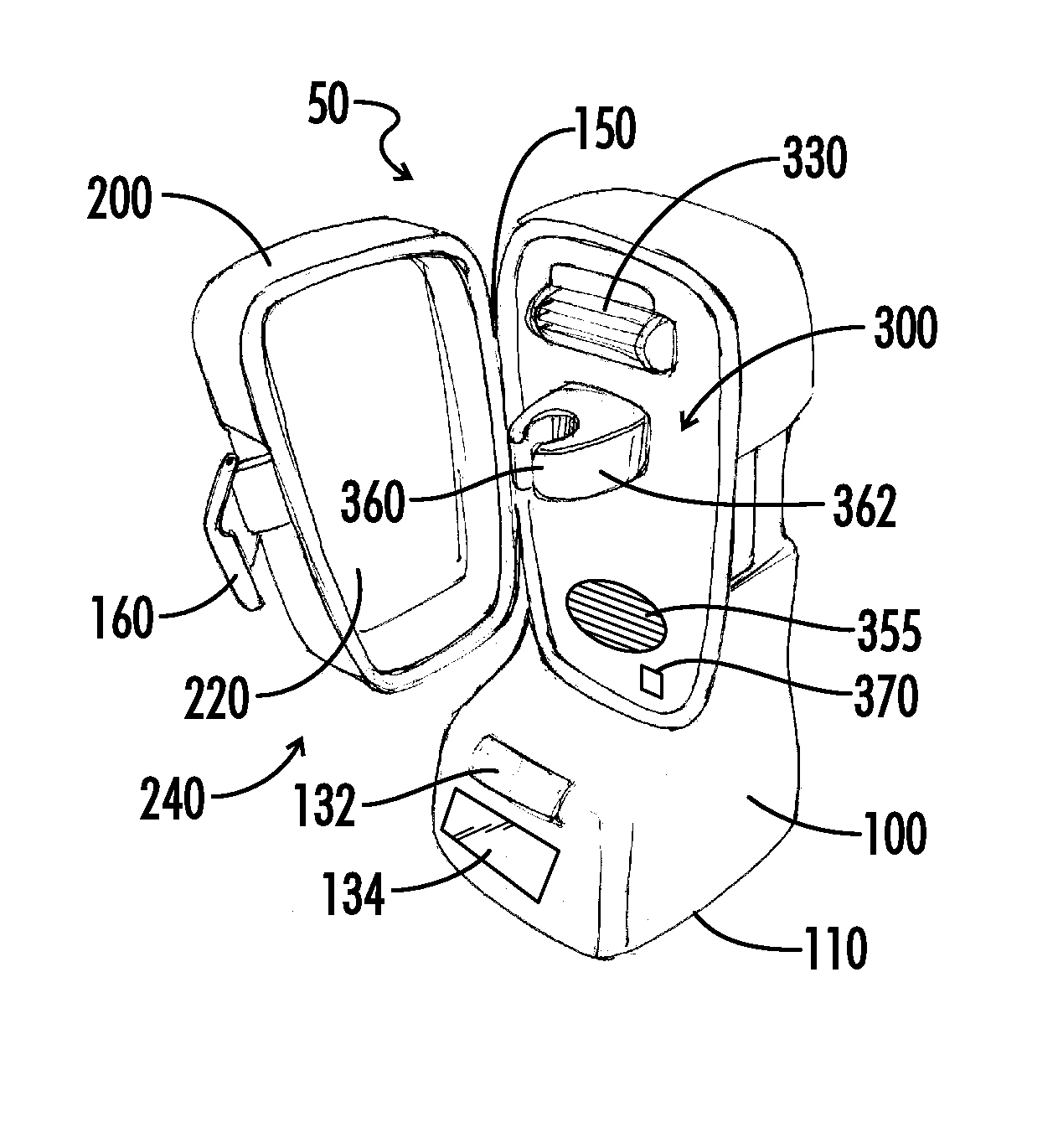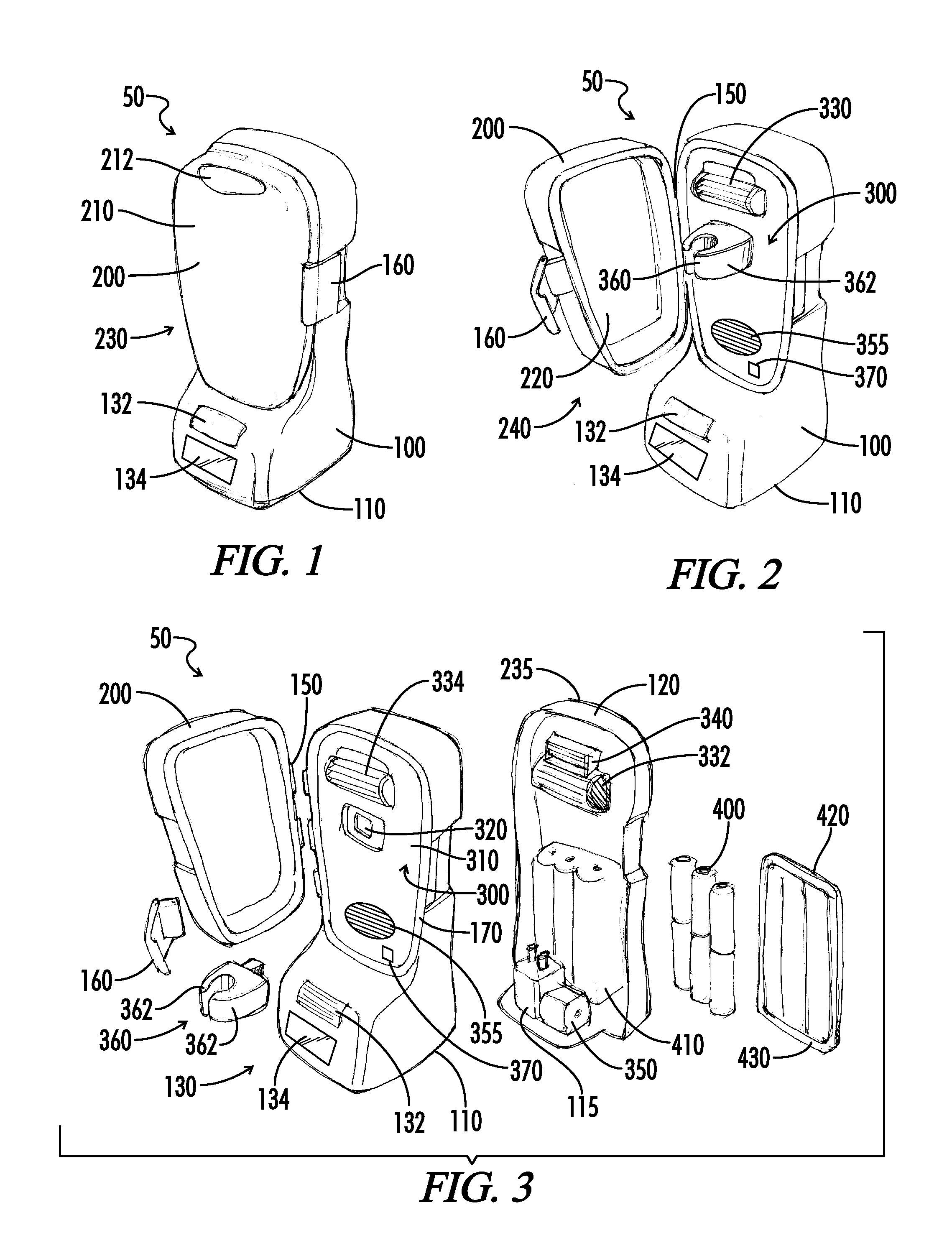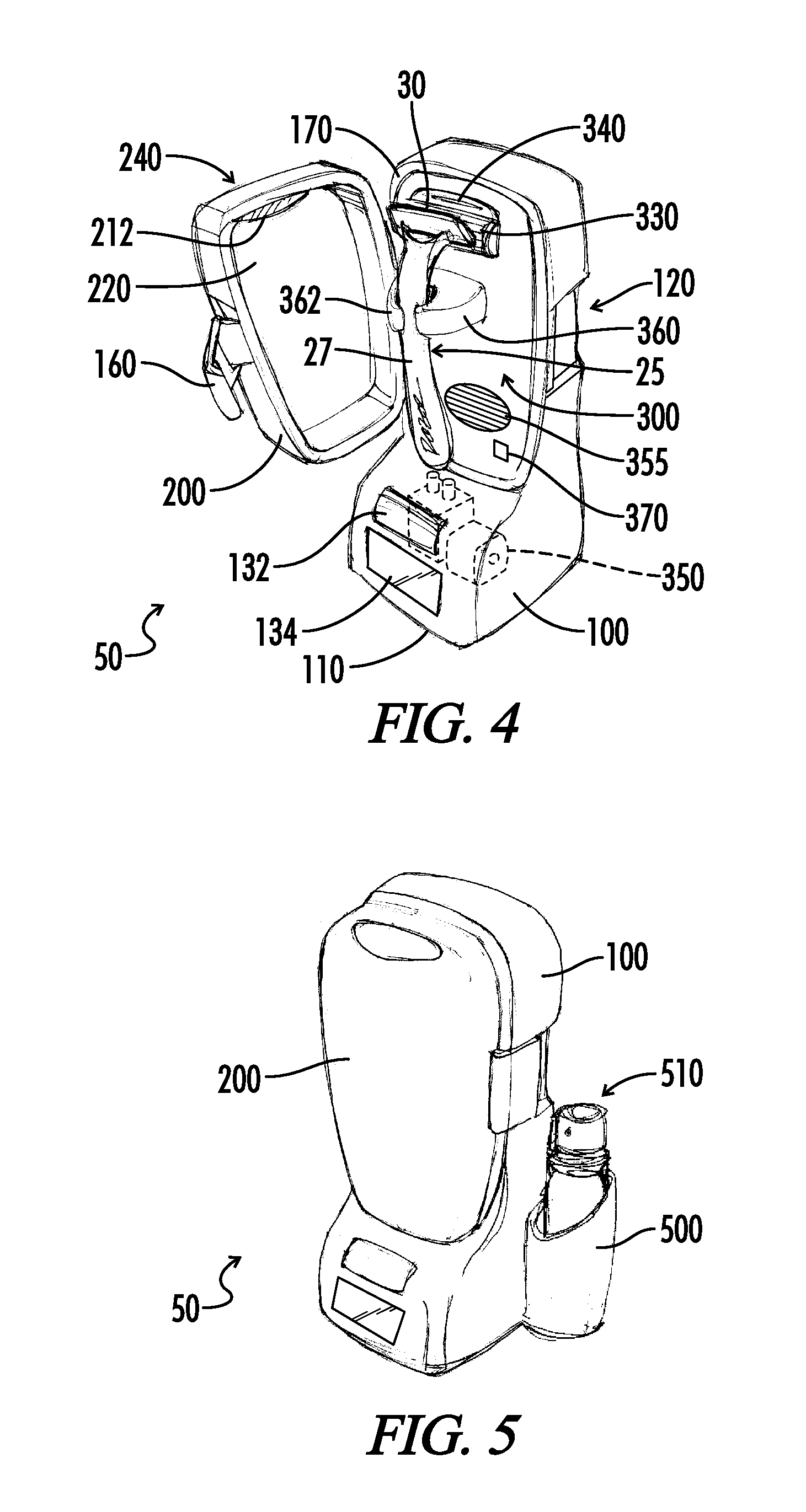Hygienic razor blade dryer
a dryer and razor blade technology, applied in the field of dryers, can solve the problems of reducing the effectiveness of the dryer, dulling effect, etc., and preventing moisture buildup in the air. , the effect of inhibiting oxidation on the blade surfa
- Summary
- Abstract
- Description
- Claims
- Application Information
AI Technical Summary
Benefits of technology
Problems solved by technology
Method used
Image
Examples
Embodiment Construction
[0016]This disclosure describes the best mode or modes of practicing the invention as presently contemplated. This description is not intended to be understood in a limiting sense, but provides an example of the invention presented solely for illustrative purposes by reference to the accompanying drawings to advise one of ordinary skill in the art of the advantages and construction of the invention. In the various views of the drawings, like reference characters designate like or similar parts.
[0017]FIG. 1 is a perspective view of one embodiment of a dryer device 50 of the present invention in a closed position, with FIG. 2 illustrating the device 50 in the open position and FIG. 3 illustrating an exploded view of one embodiment of the assembly of the device 50. FIG. 4 shows one embodiment the device 50 in use. While the drying device 50 of FIGS. 1-4 is shown and described for use with a single shaving razor blade 25 (FIG. 4), it is not intended to be limited for use with such an im...
PUM
 Login to View More
Login to View More Abstract
Description
Claims
Application Information
 Login to View More
Login to View More - R&D
- Intellectual Property
- Life Sciences
- Materials
- Tech Scout
- Unparalleled Data Quality
- Higher Quality Content
- 60% Fewer Hallucinations
Browse by: Latest US Patents, China's latest patents, Technical Efficacy Thesaurus, Application Domain, Technology Topic, Popular Technical Reports.
© 2025 PatSnap. All rights reserved.Legal|Privacy policy|Modern Slavery Act Transparency Statement|Sitemap|About US| Contact US: help@patsnap.com



